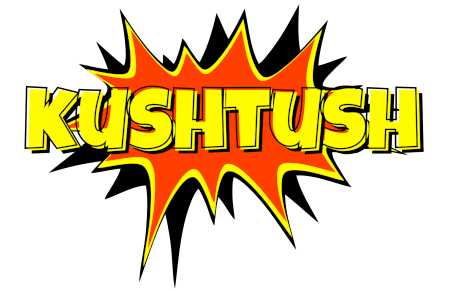If you’ve ever found yourself devouring a peanut butter and jelly-covered steak while immersed in the epic journey of Frodo and his companions in the Lord of the Rings trilogy after a smoke session, you’re probably no stranger to the infamous “munchies.” But have you ever wondered why exactly marijuana has the magical ability to transform you into a ravenous foodie? Well, my curious readers, the answer is far from simple. It’s a captivating interplay of various factors that includes an enhanced sense of smell, a dopamine rush, and the involvement of the appetite-stimulating hormone ghrelin. So, let’s embark on a flavorful journey to unravel the science behind these munchies.
To understand how marijuana triggers those irresistible cravings, we must first delve into the world of cannabinoids. Tetrahydrocannabinol (THC), the notorious cannabinoid responsible for the memory-erasing high, is just one of the 85 distinct cannabinoids found in marijuana. Each of these cannabinoids wields its own unique physiological effects. To grasp the mechanics of hunger induced by marijuana, we need to explore what typically triggers our appetite.
Our body harbors intricate systems responsible for regulating when and how much food we need. Although many details remain a mystery, we do know that the sensation of hunger is a bidirectional process that adapts based on whether the body detects a shortage or surplus of energy storage.
When our body senses an energy deficiency, it secretes ghrelin, a hunger-inducing hormone, primarily produced by the gastrointestinal system. Ghrelin stimulates the hypothalamus in our brain, leading to an increase in our appetite. Simultaneously, in the brain’s Ventral Tegmental Area (VTA), responsible for releasing the feel-good chemical dopamine, changes occur. This discovery is nothing short of fascinating.
On the flip side, when we have an abundance of energy resources, fat cells release a hormone called leptin. Leptin signals the hypothalamus to suppress our appetite. Research suggests that leptin can also influence dopamine release through its effects on the VTA. Additionally, another neurotransmitter, anandamide, has its actions offset by leptin. Interestingly, both THC and anandamide share the same receptor called cannabinoid receptor type 1 (CB1), which happens to be a potent appetite stimulant. When THC binds to anandamide receptors, it reduces the amount of leptin in our blood, resulting in an increase in hunger.
To add more complexity to the mix, an enzyme known as 5′ adenosine monophosphate-activated protein kinase (AMPK) plays a pivotal role in regulating the entire hunger system.
Marijuana’s Multifaceted Effects on the Body
Marijuana doesn’t just stop at inducing hunger; it also brings a myriad of effects to the table. These include euphoria, analgesia, sedation, memory impairment, and impaired cognition. But our focus here is on how it reduces the frequency of vomiting, which, interestingly, mirrors the function of the endocannabinoid system naturally present in our bodies. This system, consisting of receptor sites throughout our central and peripheral nervous systems, regulates various physiological processes, including hunger. So, when you’re indulging in some Maryjane-munchies, your body reacts as if it’s genuinely famished, all thanks to the cascade of hormones and neurotransmitters released.
One fascinating process, highlighted in a 2014 research paper, is how THC binds to receptors in the main olfactory bulb (MOB), significantly enhancing our sense of smell. In more technical terms, the study’s authors explained that “local pharmacological and genetic manipulations revealed that endocannabinoids and exogenous cannabinoids increased odor detection and food intake in fasted mice by decreasing excitatory drive from olfactory cortex areas to the MOB.”
But why does an enhanced sense of smell matter? Well, it’s a game-changer. When your sense of smell is dialed up, the food you eat becomes more enticing. Imagine savoring the aroma of a delectable ham and cheese Hot Pocket; you’re likely to subconsciously inhale the scent while chewing. This action transports the meal’s aroma and enhances your ability to discern subtler flavors. Our sense of smell and taste are inextricably linked; without them, we’d have to rely solely on the chemical signals from our tongues to experience any semblance of flavor. (For a deeper dive into the interplay between smell and taste, check out our article on “What Causes Aftertaste?”)
Moreover, THC, by influencing the CB1 receptor site mentioned earlier, intensifies your hunger. When activated, CB1 makes sugary delights more palatable, although it doesn’t have any significant impact on bitter or salty tastes. This could explain why some individuals report an enhanced appreciation for sweets when they’re high. Furthermore, in the nucleus accumbens region of the hypothalamus, CB1 can trigger the production of dopamine, adding another layer to the munchies puzzle.
The Role of Dopamine
Now, let’s explore the intriguing role of dopamine in the munchies phenomenon. Dopamine is often referred to as the “feel-good” neurotransmitter, and it plays a critical part in our reward and pleasure system. When THC interacts with the CB1 receptors, as mentioned earlier, it can stimulate the release of dopamine, leading to a heightened sense of pleasure and reward. This dopamine rush can make even the most mundane of foods seem exceptionally appealing and gratifying.
So, when you’re sitting there, gazing at that bag of potato chips or reaching for a slice of pizza after a toke, it’s not just your imagination. Your brain is genuinely experiencing a surge of pleasure, making the act of eating incredibly enjoyable. This is where the famous phrase “food tastes better when you’re high” finds its scientific backing.
The Magical Munchies
In summary, the munchies are a captivating result of the intricate interplay between our senses and brain chemistry, all under the influence of marijuana. It starts with the enhanced sense of smell, thanks to THC’s interaction with receptors in the main olfactory bulb. This heightened sense of smell makes food taste better and more enticing, as you inhale the delightful aromas while chewing.
Simultaneously, THC’s activation of the CB1 receptors intensifies hunger, particularly for sweet treats, and triggers dopamine production in the nucleus accumbens, enhancing the pleasure of eating. This dopamine rush creates an undeniable connection between marijuana and the insatiable craving for food.
So, the next time you find yourself succumbing to the allure of the munchies, remember that it’s not just about satisfying your cravings; it’s a fascinating dance between your senses and the chemical pathways in your brain, orchestrated by the remarkable effects of marijuana. Enjoy your journey into the world of flavors, and embrace the magic of the munchies!
- Enhancing Trust with Blockchain Identity Verification - January 24, 2024
- How Marijuana Turns You into a Food Lover - December 1, 2023
- Behind the Scenes of the U.S. Nuclear Gun - November 28, 2023

